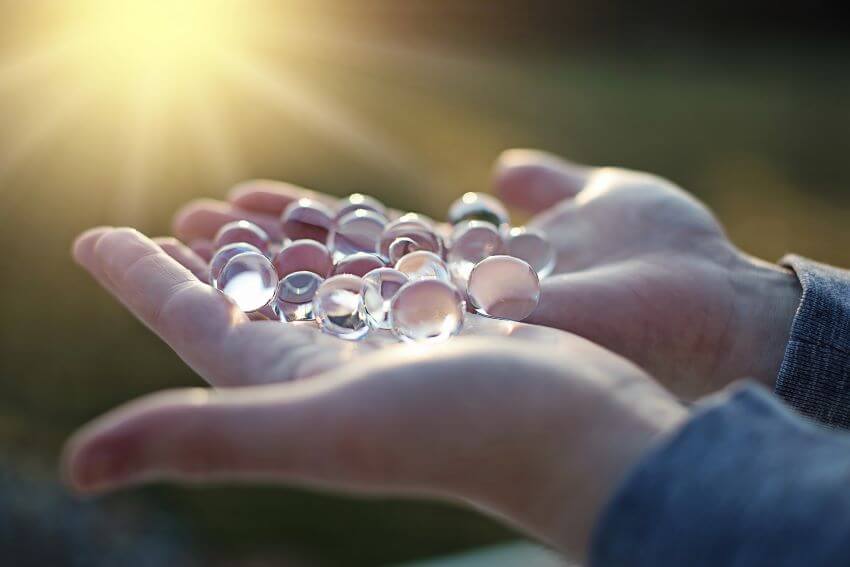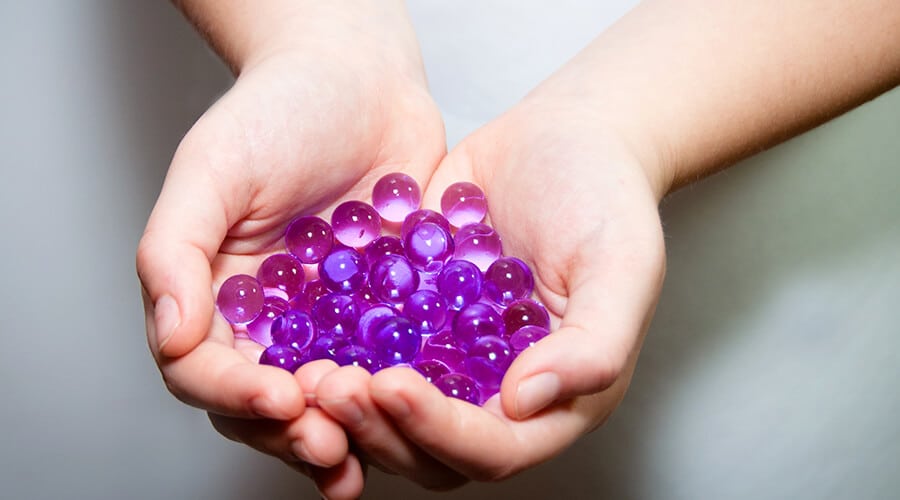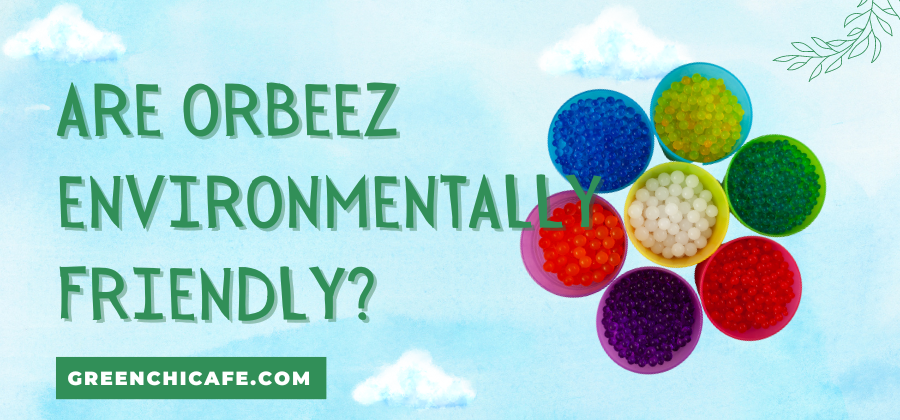Orbeez has exploded in popularity recently.
Kids love playing with these squishy little balls of joy, but how eco-friendly are they really?
This article will uncover the truth about Orbeez and its environmental impact.
Are Orbeez Environmentally Friendly?

Yes, Orbeez can be considered environmentally friendly.
They are made of a biodegradable polymer that breaks down over time.
Orbeez does not contain any toxic materials and is safe for kids and pets.
As long as they are disposed of properly in small quantities, Orbeez poses little risk to the environment.
However, it’s important to avoid flushing large amounts or letting them enter waterways.
Overall, Orbeez is a more eco-friendly toy option compared to those made of plastic.
Key Points
- Orbeez are made from sodium polyacrylate, a biodegradable polymer
- They are non-toxic and safe for children and pets
- Orbeez should be disposed of in small quantities in the trash or by dissolving in water
Our Opinion
Based on the available evidence, we believe Orbeez is a good environmentally friendly toy option.
Their biodegradable polymer composition and lack of toxic chemicals make them much less harmful than plastic toy alternatives.
While care should be taken during use and disposal, Orbeez overall has a minimal environmental impact and can be considered eco-friendly especially compared to similar sensory play toys.
Are Orbeez Biodegradable?

The key fact about Orbeez is that they are made of a non-toxic, biodegradable polymer called sodium polyacrylate. This polymer is designed to safely break down over time when exposed to organic materials, moisture, and bacteria present in soil and waterways.
Specifically, here’s why Orbeez is considered environmentally friendly:
- Made of 100% biodegradable materials
- Non-toxic and safe for kids and pets
- Originally invented to help soils retain water for agriculture
- Deteriorate similar to other organic materials when composted
So in summary, Orbeez is not like traditional plastic beads. Their biodegradable polymer composition allows them to break down naturally when disposed of properly. This makes them far less environmentally harmful than plastic alternatives.
What Are Orbeez Made Of?

Orbeez is made of a superabsorbent polymer called sodium polyacrylate. This polymer is composed of acrylic acid monomers that are crosslinked into a 3D network using sodium ions.
When dry, the polymer takes the form of fine white granules. But when placed in water, the sodium polyacrylate rapidly absorbs the liquid and expands into colorful, squishy spheres up to 100 times their original size.
The polymer is safe, non-toxic, and biodegradable. It was originally developed in the 1960s for use in agriculture to help soils retain water and nutrients.
Today, sodium polyacrylate is most commonly used as an absorbent material in diapers and feminine hygiene products. The unique water-absorbing properties also make it perfect for novelty toys like Orbeez.
While the polymer itself is inert and harmless, the dyes added to the color Orbeez could have some environmental impact. Proper disposal is important to allow the Orbeez to fully biodegrade without releasing dyes into the environment.
How Long Does Orbeez Last in the Environment?
The lifespan of Orbeez in the environment depends on several factors. When exposed to sunlight, air, moisture, and microorganisms, the Orbeez will slowly begin to deteriorate.
- Outdoors, Orbeez may fully biodegrade in 1-5 years when mixed into compost or soil. The polymer breaks down into carbon dioxide and water.
- Indoors or in landfills, biodegradation happens much slower due to lack of moisture, air exposure, and microorganisms. It can take decades for Orbeez to fully deteriorate under these conditions.
- The dyes and fragrances added to Orbeez complicate biodegradation. These additives may not break down at the same rate as the polymer.
Proper disposal is key. For quicker biodegradation, Orbeez is best mixed into compost or garden soil. Recycling programs don’t accept Orbeez, so they shouldn’t be placed in recycling bins.
Ultimately, Orbeez is designed as a safe, eco-friendly toy. But their long lifespan means every precaution should be taken to keep them out of ecosystems and landfills. Responsible use and disposal help minimize their environmental impact.
Can Orbeez Harm Wildlife and Ecosystems?
Like any small, colorful object, Orbeez can pose a risk if wildlife mistake them for food. However, Orbeez is non-toxic and made from safe materials.
- If ingested by wildlife, Orbeez is not poisonous. They pass through the digestive system without causing harm.
- Problems mainly arise when animals mistake Orbeez for eggs or other prey. This is rare, but supervision is advised when using Orbeez outdoors.
- Orbeez should not be poured into natural ecosystems in large quantities. Small amounts mixed into garden soil can enrich the environment as they deteriorate.
- But millions of Orbeez flooded into wetlands or waterways may clog up habitats and disturb native species before biodegrading.
With proper precautions, Orbeez poses minimal risk to wildlife and ecosystems. Supervise use around pets and outdoors. Dispose of Orbeez thoughtfully after play. When handled carefully and in small quantities, Orbeez can be an eco-friendly toy.
Are There Eco-Friendly Alternatives to Orbeez?
Yes, many creative toy alternatives exist that are just as fun but more sustainable than Orbeez:
- For sensory play, use colored rice, pasta, or beans. These can be reused and are compostable.
- For water play, try using sponges cut into shapes. They absorb water well and can be wrung out and reused.
- For a tactile experience, stuff old pantyhose with cotton balls, scraps of fabric, or crumpled paper. These make great DIY stress balls.
- For color and texture, glue together layers of tissue paper to create paper beads. These break down naturally.
- For moldable squishy toys, knead together flour, salt, and water to make edible play dough.
With a little creativity, many everyday items can become fun sensory toys. Choosing reusable, natural materials is an eco-friendly way for kids to explore and create. The best toys nurture young imaginations while caring for our shared world.
FAQ
Are Orbeez Biodegradable?
Yes, Orbeez are made from sodium polyacrylate which is a safe, non-toxic polymer that breaks down over time when exposed to moisture, heat, and bacteria. Multiple scientific studies have confirmed the biodegradability of Orbeez.
What’s the Best Way to Dispose of Orbeez?
The recommended way to dispose of Orbeez is to mix them with warm water which causes them to dissolve into a non-toxic solution that can be poured down the drain. Orbeez can also be thrown away in regular trash in small quantities. Do not flush large amounts down the toilet.
What Happens to Orbeez Left Outside?
If left outside exposed to the elements, Orbeez will eventually biodegrade from moisture, heat, and bacteria in the soil. However, this process can take several months. It’s best to properly dispose of them rather than leave them outside.
What Happens to Orbeez When They Get Wet?
When Orbeez absorbs water they expand up to 200 times their original size. They become soft and squishy but will maintain their enlarged size until they dry out again. Getting Orbeez wet does not damage them or affect their biodegradability.
Conclusion
Orbeez is a popular children’s toy that is made of sodium polyacrylate, a safe, non-toxic polymer that is 100% biodegradable. While Orbeez can be messy to play with and require some care when disposing of them, overall they do not pose significant environmental harm if used responsibly and are considered environmentally friendly. Proper disposal by dissolution in water or small quantities in the trash is recommended.
